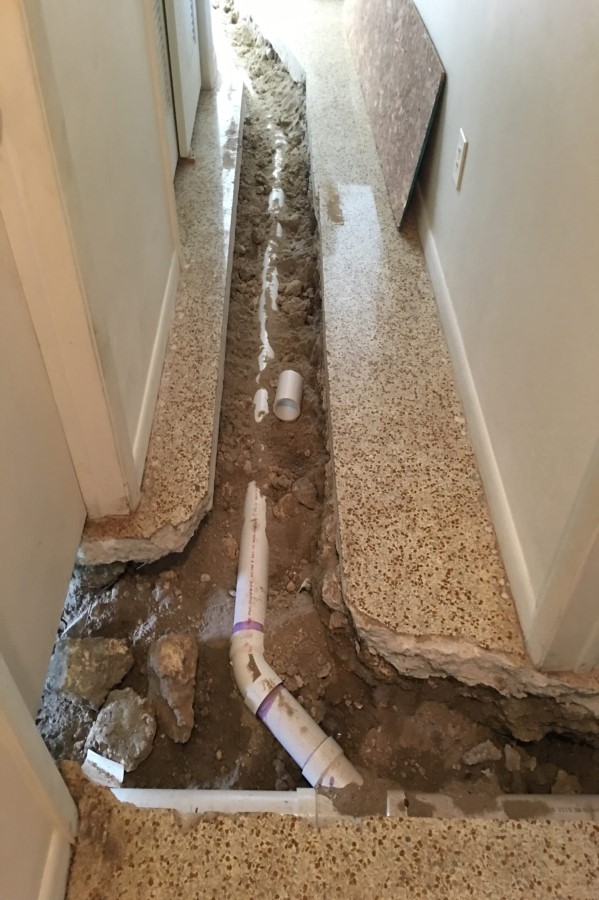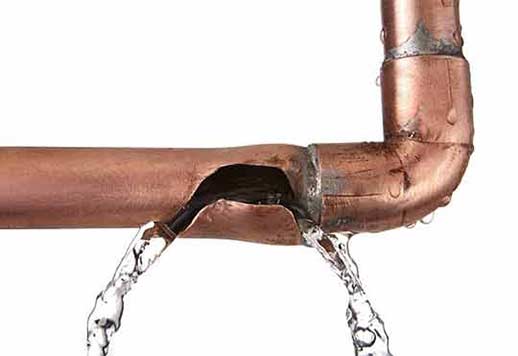Signs of a Burst Pipe: How to Identify and Address the Issue Before It Escalates
Signs of a Burst Pipe: How to Identify and Address the Issue Before It Escalates
Blog Article
Stopping Burst Piping: Necessary Tips to Secure Your Plumbing
Preventing burst pipes is a vital concern for home owners, specifically throughout chillier months when the danger of freezing is heightened. Implementing critical actions such as proper insulation, regular evaluations, and keeping regular indoor temperatures can significantly reduce the likelihood of pipe failure.
Understand Pipeline Vulnerabilities
Recognizing pipe susceptabilities is crucial for reliable plumbing upkeep and protecting against costly damage. A number of variables contribute to the sensitivity of pipelines to bursts, including material make-up, age, and environmental problems. Older pipelines, particularly those made from galvanized steel or polybutylene, typically degrade in time, causing increased risk of leakages and tears.
Temperature level variations can additionally considerably influence pipeline integrity. In cooler environments, water trapped in pipelines can ice up, putting in and broadening stress on the pipeline wall surfaces, which may eventually result in a ruptured. High water stress can strain pipelines, specifically at bends and joints, heightening the possibility of failure.

Insulate Pipeline Correctly
Appropriate insulation of pipes is essential for protecting against cold and subsequent ruptureds during cold weather (burst pipe). Shielding your plumbing system effectively safeguards against temperature level goes down that can result in costly damage. Begin by recognizing vulnerable locations where pipes are revealed to outside temperatures, such as basements, attic rooms, and exterior walls
Use foam pipeline insulation sleeves or cover insulation tape around these areas to supply a safety barrier. Guarantee that all areas of the pipes, especially those with limited warmth exposure, get ample insulation. Pay unique interest to installations and joints, as these are much more vulnerable to cold.
When insulating, it's important to select materials that fulfill neighborhood building codes and are suitable for the certain atmosphere. Fiberglass insulation is commonly suggested for its thermal resistance properties. Furthermore, take into consideration using warmth cable televisions or tape in severe problems, which can be connected in to supply supplementary warm
On a regular basis evaluate protected pipes for any type of signs of wear or damages, as endangered insulation can reduce its effectiveness. By taking these aggressive actions, you significantly reduce the threat of pipeline bursts, guaranteeing a trusted plumbing system throughout the winter season.
Maintain Constant Temperature
A steady indoor temperature is vital for preventing burst pipelines throughout the freezing months. When temperatures drop, water within pipes can freeze, producing and expanding stress that might ultimately cause the pipelines to ruptured. To minimize this risk, homeowners must preserve a regular temperature level throughout their living area, preferably no less than 55 ° F(13 ° C)Making use of a programmable thermostat can help handle interior temperatures successfully, ensuring that spaces with pipes continue to be cozy even when the home is unoccupied. Pay unique attention to areas that are much more check my source at risk to cool, such as garages, attic rooms, and cellars. Keeping cabinet doors open under sinks can also permit warmer air from the home to distribute around plumbing.
On top of that, it is prudent to allow taps to trickle somewhat throughout extreme cold snaps. This small circulation of water can protect against cold by easing stress within the pipelines. During specifically serious weather events, take into consideration temporarily suspending any nighttime obstacles on your thermostat to keep a constant warm setting. By implementing these strategies, home owners can significantly decrease the danger of pipeline ruptureds and safeguard their pipes systems against the severe winter season elements.
Frequently Evaluate Plumbing
Regular assessments of plumbing systems are important for protecting against burst pipes and maintaining overall home integrity. Routine checks permit homeowners to determine possible issues before they escalate into expensive repairs or major water damage. During these evaluations, it is important to check out noticeable pipelines for indicators of corrosion, leaks, or put on. Pay special attention to areas vulnerable to cold, such as basements, attic rooms, and outside wall surfaces.
Additionally, evaluating joints and links is essential, as these Recommended Site factors are often susceptible to leakages. House owners should also examine water stress degrees, as too much pressure can strain the pipes system and enhance the danger of pipe bursts.
Take into consideration organizing expert pipes evaluations at the very least yearly, particularly prior to winter months, to ensure your system is planned for colder temperatures. Normal evaluations not just aid in identifying immediate issues yet additionally foster long-lasting maintenance strategies that can enhance the life-span of your plumbing system. By being aggressive in your technique, you can secure your home against the costly and disruptive consequences of burst pipes. Focusing on plumbing inspections is a financial investment in your home's health and wellness.
Know Emergency Situation Procedures
Recognizing emergency treatments is important for every house owner, specifically after conducting normal plumbing evaluations. Being prepared for a pipes emergency can considerably alleviate damages and conserve expenses.
Next, maintain essential tools helpful. A plumbing emergency situation package must include a wrench, bettor, and towels, as well as a flashlight and a pail for little leaks. Additionally, consider having the call details for a trusted plumbing conveniently offered, needs to the scenario top article rise beyond your control.
If you spot a leakage or ruptured pipe, quickly shut off the water system and notify your plumber. Record the damages with pictures for insurance coverage purposes. Know the indications of prospective pipes issues, such as unusual water stress variations or damp places on walls
Eventually, proactive understanding and speedy activity are critical in taking care of pipes emergencies, ensuring your home continues to be safeguarded and minimizing prospective damages.

Conclusion
In verdict, protecting against ruptured pipes demands a diverse strategy that consists of understanding pipe vulnerabilities, proper insulation, preserving regular interior temperature levels, regular evaluations, and expertise of emergency treatments. By implementing these important approaches, the risk of pipes failures can be significantly minimized, thereby guaranteeing the long life and effectiveness of the pipes system. Proactive steps not only protect against potential damages yet likewise add to general water conservation and the protection of property.
In colder climates, water trapped in pipes can freeze, broadening and applying pressure on the pipeline wall surfaces, which may inevitably lead to a burst. When temperatures decline, water within pipes can ice up, broadening and producing pressure that might ultimately cause the pipes to burst. By carrying out these techniques, property owners can considerably decrease the danger of pipeline ruptureds and guard their plumbing systems against the severe wintertime components.

Report this page